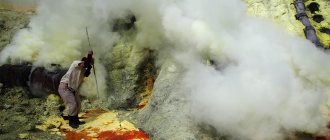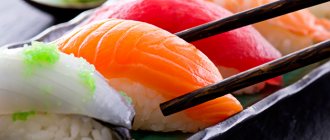Ethylene glycol (glycol, monoethylene glycol) is the simplest polyhydric alcohol, a colorless, oily, low-volatile liquid with an indistinct odor and a sweetish taste. In any quantity, it dissolves well in water, alcohol, and acetone.
Source: depositphotos.com
Ethylene glycol belongs to the class of flammable substances; spontaneous combustion occurs at a temperature of 120 ºС.
Low cost and a number of unique characteristics (including the ability to reduce the freezing point of an aqueous solution) explain its widespread use in various industrial sectors:
- as part of antifreeze and brake fluids for cars;
- in cooling systems and coolants of various technically complex devices;
- in the process of manufacturing polyurethanes and synthetic plastics;
- as a cryoprotectant;
- as part of cleaning agents;
- as a solvent in paint and varnish production, metallurgy, printing, in the production of cosmetics, textile, leather, tobacco, pharmaceutical, perfume industries, etc.
General information
Ethylene glycol is a dihydric alcohol. In its pure form it is a transparent liquid, colorless and odorless. This alcohol tastes slightly sweet and has an oily consistency. The substance is poisonous and belongs to hazard class III.
One of the ethers of ethylene glycol is propylene glycol. It is widely used in industry for the manufacture of polyester resins, medicines, antifreeze, brake fluid, and also as a food additive, as a solvent (E1520). Propylene glycol is also poisonous in large quantities. Poisoning with this substance develops hemolysis, hearing loss, liver and kidney damage.
Ethylene glycol - what is this substance and where is it used?
Ethylene glycol is a representative of alcohols, which contains several methyl groups. It has an oily consistency, no odor, a sweetish taste and the ability to freeze only at very low temperatures.
Ethylene glycol is used in various fields:
- production of antistatic agents;
- production of “anti-freeze”, anti-icing products;
- as a lubricant in refrigeration units;
- in hydraulic systems instead of filler;
- during disinfection measures, if it is necessary to clean a large area;
- in the production of household chemical products, including cellophane and polyurethane;
- when cooling various systems;
- as part of shoe creams to improve their properties;
- in organic chemistry as a high-temperature solvent;
- in medicine for the preservation of organs and tissues, etc.
Despite the widespread use of this alcohol, the toxicity of ethylene glycol is very high. It belongs to the third class of danger and can cause serious harm to human health.
The effect of ethylene glycol on the human body
After entering the human body, ethylene glycol is quickly absorbed from the stomach and intestines, like any alcohol, and enters the liver through the bloodstream, where it begins to decompose under the influence of alcohol dehydrogenase (ADH) into several toxic substances: oxalic acid, oxaloacetic acid and glyoxal. It is the oxidation products of ethylene glycol that pose a danger to humans.
The most dangerous decomposition product is oxalic acid, which in high concentrations disrupts the acid-base balance and prevents the excretion of calcium from the body. This leads to disruption of the transmission of neuromuscular impulses, inhibition of the central nervous system, and difficulty breathing. Oxalic acid binds to calcium and forms oxalate stones in the kidneys, which leads to the development of kidney stones and necrosis of the renal glomeruli and tubules.
How can you get poisoned?
Ethylene glycol can cause poisoning in two ways:
- When inhaling its vapors;
- When consumed internally;
- Through the skin.
Inhalation occurs, as a rule, at work as a result of an accident , violation of production technology and non-compliance with personal protective measures. Ethylene glycol is very volatile, so high concentrations in the air are practically not created, and poisoning in this way is chronic - periodic inhalation of small doses of the vapor of the substance.
Another, most dangerous and common route of poisoning is ingestion of the substance. This can happen accidentally when ethylene glycol is stored in a drink bottle or left within the reach of children. But most often, such poisonings happen to people with alcohol addiction who deliberately take it to get drunk.
For this purpose, it is also obtained at home by distilling antifreeze or brake fluid through a distillation apparatus. The absence of any odor and sweetish taste mislead that this “analog” of ethyl alcohol is not dangerous, which leads to an overdose.
Penetration through the skin is quite rare, only with prolonged direct contact with liquid, and intoxication is not very pronounced.
Symptoms of acute ethylene glycol poisoning
When ingesting a concentrated solution or large volumes of ethylene glycol, clinical signs develop quite quickly, varying depending on the stage of intoxication:
- The period of intoxication. It manifests itself in a picture that is similar to ordinary alcohol intoxication. The degree of euphoria depends on the dose of alcohol taken: there are cases where people died after taking only 50 ml of poison, but survived after drinking 500 ml. The generally accepted lethal dose of ethylene glycol for humans is 100-150 ml of a 25-60% solution.
- A period of imaginary prosperity. It begins a few hours (usually 2-10 hours) after taking the poison. The well-being of the poisoned person is not affected. In most cases, the person simply falls asleep.
- Period of intoxication. At this stage, patients note the following symptoms:
- General weakness, dizziness, headache. This is a sign of damage to brain structures.
- Nausea, vomiting, and stomach pain indicate damage to the gastrointestinal tract.
- Low back pain occurs and quickly intensifies due to the destruction of the renal parenchyma.
- Subsequently, stupor develops, turning into a coma after 1-2 days. Breathing becomes deep and noisy. The patient's face becomes purple, the skin is moist and cold.
- If the patient survives the first 2 days, his condition improves briefly, but this is a period of imaginary well-being. On days 3-5, the symptoms worsen again: pain in the lower back and abdomen, headache, nausea and vomiting reappear. During this period, acute renal failure with anuria and liver enlargement develop.
- Recovery period. At this stage, 7-10 days after taking a toxic substance, urination is restored: the anuria stage is replaced by polyuria, which lasts several months.
Possible consequences
By the end of the third week of acute intoxication, up to 40% of victims die, more often from the consequences of damage to the urinary system (acute renal failure, uremic coma, azotemia).
In addition to kidney damage, victims are diagnosed with cerebral edema, toxic liver damage, pulmonary edema, fluid and pinpoint hemorrhages in the tissues of the heart sac, and inflammatory changes in the myocardium. A rare complication is bilateral optic atrophy.
Symptoms of chronic poisoning
Workers whose activities involve hazardous substances sometimes suffer from chronic ethylene glycol poisoning. Inhalation of its vapors does not cause intoxication, but leads to the development of vegetative-vascular dystonia. It is more dangerous if toxic liquid enters the digestive tract. Chronic poisoning can develop over several years if a worker neglects safety precautions (does not use a respirator) and drops of ethylene glycol enter the mouth.
But most often, chronic intoxication occurs in workers who like to drink - they use highly diluted antifreeze, which results in mild or moderate intoxication, and the concentration of oxalic acid in the blood is low. But frequent intake of even small amounts of ethylene glycol leads to the gradual growth of oxalate stones in the kidneys, the development of toxic encephalopathy and alcoholic hepatitis.
Occupational therapy
The emergency care algorithm includes a mandatory call to a medical team, even if ethylene glycol intoxication seems very mild. If a patient is poisoned by a toxic substance, doctors will use the following therapeutic methods:
- provide the victim with peace and good access to oxygen;
- will prescribe ATP and vitamins from group B, as well as vitamin C;
- Prednisolone can be administered to reduce the inflammatory response;
- the victim is prescribed folic acid in large quantities to bind the breakdown products of ethylene glycol;
- Saline solutions are used to correct metabolism and water-salt balance.
First aid for ethylene glycol poisoning
It is often very difficult to suspect ethylene glycol poisoning, since those who are poisoned behave like ordinary people who have taken alcohol. Often victims with brain disorders are mistaken for alcoholics and pass by without paying attention.
The feeling of euphoria and intoxication continues until the 3rd period of poisoning, when the first noticeable symptoms of intoxication appear. From the moment you take antifreeze until signs of poisoning appear, it can take from 1 to 12 hours , depending on the concentration of ethylene glycol in the solution taken, and, of course, on its volume.
As part of first aid in case of suspected poisoning, the following measures are carried out:
- Rinse the stomach with a 2% solution of regular baking soda. It is necessary to force the patient to gradually (in several doses) drink a large volume of liquid (8-10 l) so that the stomach is completely cleared.
- If possible, the victim should be given a saline laxative. The best remedy in this case is magnesium sulfate. The drug will not only cleanse the intestines of toxic substances, but will also significantly reduce damage to the kidneys and liver, as it is a calcium antagonist.
- After this, give the patient a glass of regular vodka. Surprisingly, ethyl alcohol is an antidote to ethylene glycol. Ethyl alcohol penetrates the liver faster than ethylene glycol and competes with it for the enzyme alcohol dehydrogenase. As a result, a smaller volume of incoming poison is broken down into oxalic acid, and less harm is caused to the body.
In the absence of consciousness, severe back pain, or clonic convulsions, providing first aid can be dangerous for the victim. In such cases, you should immediately call an ambulance team.
First aid and removal of substances from the body
The algorithm for helping a person who has drunk ethylene glycol or a liquid containing it is as follows:
- Call an ambulance;
- Rinse the stomach with soda solution (1 tablespoon per 0.5 liters of water);
- Give plenty of warm drinks: milk, still mineral water;
- Give a sorbent to drink (activated carbon, polysorb, enterosgel);
- Give a laxative, magnesium is best.
If the victim is conscious and his condition is not serious, it is good to give him 100 ml of vodka or 50 ml of medical alcohol diluted in half with water. Strange as it may seem, ethyl alcohol is an antidote to this toxic substance that can be used at home.
If the victim is unconscious, he should be laid on a flat surface , turning his head to the side to avoid asphyxia with stomach contents in case of vomiting. It is necessary to feel the pulse and measure the pressure. The pulse may be thread-like and not even palpable on the wrist; it must be determined on the carotid arteries - the lateral surface of the neck.
Treatment
All patients with suspected poisoning by alcohol surrogates are admitted to the intensive care unit (in large cities - to the toxicology department). The following therapeutic and diagnostic procedures are performed in hospital conditions:
- Hemodialysis is the most effective measure that removes all toxic substances from the body.
- Monitoring the acid-base balance of the blood. If it is violated, Hemodez is administered intravenously or Regidron is administered orally.
- A 5% solution of ethyl alcohol in a 5% glucose solution is administered intravenously along with 0.5 ml of magnesium sulfate for 2-3 days.
- For severe lower back pain, a perirenal block is used, which not only relieves pain, but also improves intestinal motility, which accelerates the elimination of toxins.
Giving help
At the pre-medical stage, the flow of the substance into the blood should be reduced or stopped. To do this, wash the stomach. They combine the restaurant cleaning method using a soda solution. It would not be superfluous to use magnesium sulfate. It is recommended to drink plenty of fluids, preferably alkaline.
The medical stage of care includes infusion therapy. At the same time, detoxification continues and restricts the absorption of toxins into the blood. A gastric tube may be used. Intestinal lavage (lavage) will also limit the absorption of ethylene glycol.
Forced diuresis is used for the same purposes. Diuretics are added against the background of glucose and ascorbic acid infusion. Loop diuretics are used - Lasix, Furosemide. But such treatment is carried out against the background of monitoring serum potassium. When cerebral symptoms increase and there is a threat of cerebral edema, Mannitol is used.
Convulsive syndrome is controlled by anticonvulsants. It is important to monitor the general and mental state of the patient.
Prevention and rehabilitation
A measure to prevent intoxication is educational work with the population about the harmfulness of ethylene glycol to humans. Clinical practice shows that about 80% of those poisoned believe that antifreeze and brake fluid consist of real ethyl alcohol, and drink them without much fear. Thus, most of the population does not even know whether ethylene glycol is poisonous or not.
Preventive measures also include compliance with industrial safety regulations when working with ethylene glycol and the use of personal protective equipment.
Rehabilitation of those poisoned with ethylene glycol is carried out in sanatorium-resort institutions specializing in the treatment of kidney and urinary tract diseases (Yangan-Tau, Sergievsky Mineral Waters, Krainka, Vityazevo).
Physical and chemical properties of ethylene glycol and scope
Ethylene glycol is a clear, odorless liquid.
The substance is a colorless, odorless, sweetish liquid that dissolves perfectly in ethanol (from which “craftsmen” try to extract it with varying degrees of success). Ethylene glycol easily forms esters with various acids, i.e. the damaging effect of this substance includes exposure to volatile compounds. In a reaction that eliminates the water base, acetaldehyde is formed.
Applicable in the following areas:
- In the manufacture of non-freezing dynamite;
- In the chemical production of various types of liquids for cooling radiators (antifreeze);
Actually, this is a mixture of alcohol and ethylene glycol. It is from antifreeze that our compatriots try to extract alcohol, as a result of which most of the poisonings occur.
Photo gallery: where you can encounter the substance
The sad fact is that not every antifreeze contains ethyl alcohol. In this case, blindness and other sad consequences are added to ethylene glycol poisoning.
- Ethylene glycol is used as an electrolyte for capacitors;
- It is actively used in the production of cellophane and various synthetic hydrocarbon media;
- It is a component of paint and ink solvents;
- Used in the textile, perfume and pharmaceutical industries.
If the production cycle is not completely closed, then ethylene glycol poisoning in industries of the type described above is an occupational hazard and is treated accordingly.
Cleaning and drying
Dried with 4A molecular sieve, calcium sulfate hemihydrate, sodium sulfate, +I2, fractional distillation under reduced pressure, azeotropic distillation with benzene. The purity of the resulting product is easily determined by density.
Density table for aqueous solutions of ethylene glycol, 20°C
| Concentration % | 30 | 35 | 40 | 45 | 50 | 55 | 60 |
| Density, g/ml | 1,050 | 1,058 | 1,067 | 1,074 | 1,082 | 1,090 | 1,098 |
Notes
- ↑ 12
https://www.cdc.gov/niosh/npg/npgd0272.html - P. Ballinger, Long FA
Acid Ionization Constants of Alcohols.
II. Acidities of Some Substituted Methanols and Related Compounds 1,2 // J. Am.
Chem. Soc. / PJ Stang - American Chemical Society, 1960. - Vol. 82, Iss. 4. - P. 795–798. — ISSN 0002-7863; 1520-5126; 1943-2984 - doi:10.1021/JA01489A008 https://wikidata.org/wiki/Track:Q247556″>https://wikidata.org/wiki/Track:Q7174903″>https://wikidata.org/wiki/Track :Q898902″>https://wikidata.org/wiki/Track:Q22251355″> - Monograph on the Potential Human Reproductive and Developmental Effects of Ethylene Glycol
- SYNTHESIS 1983, No. 3, pp. 203—205
- Liebigs Annalen Chemie 1979, pp 1362—1369
- https://www.cdc.gov/niosh/ershdb/emergencyresponsecard_29750031.html
- https://www.sciencelab.com/msds.php?msdsId=9927167
- E.Yu. Bonitenko and others. Poisoning with ethylene glycol and its ethers - St. Petersburg: “Publishing House of the Scientific Research Institute of Scientific Research Institute of St. Petersburg State University”, 2003 - Medline.Ru
- Flomenbaum, Goldfrank et al.
Goldfrank's Toxicologic Emergencies. 8th Edition. - McGraw Hill, 2006. - P. 1460, 1465. - 2170 p. — ISBN 0071437630. - V. F. Kramarenko.
Toxicological chemistry. - K.: Vyshcha school, 1989. - 447 p. — 6,000 copies. — ISBN 5-11-000148-0.








